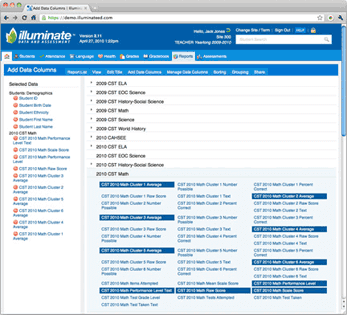

When state lawmakers learned that the exam’s contract was expiring, the bill was changed to either suspend the requirement that students pass the exam during those three years or “when the exit exam is no longer available.” Because of the uncertainty of the test’s contract, lawmakers added the clause to give flexibility to schools on the graduation requirement. The exit exam, known as CAHSEE, is based on the former state standards, which are no longer taught in classes. The cancellation comes as the state Legislature considers a bill, SB 172, which would suspend the exit exam requirement for three years.Īs introduced earlier this year, the bill called for the exam’s suspension starting in 2016-17 so there would be time to develop a graduation requirement aligned to the new Common Core standards. State officials were awaiting direction from the state Legislature before taking action on the test contract.Ībout 5,000 seniors, who would have been part of the Class of 2015, are missing the opportunity to take the July exam – often the last-ditch chance to graduate over the summer. State law began requiring that students pass an exit exam to graduate from high school starting with the Class of 2006, giving students eight chances to take it during high school.īut the contract with Educational Testing Service, which administered the exam, only ran through the May test, prompting the California Department of Education to halt the July exam, said Keric Ashley, the department’s deputy superintendent. The state canceled next month’s administration of the California High School Exit Exam because the test contract expired, leaving possibly thousands of students’ graduation status in limbo.

#Khsd illuminate testing full#
Full Circle: California Schools Work To Transform Discipline.Tainted Taps: Lead puts California Students at Risk.Education during Covid: California families struggle to learn.College And Covid: Freshman Year Disrupted.Adjuncts’ gig economy at CA community colleges.California’s Community Colleges: At a Crossroads.A town’s library fight spotlights inequities.The post-pandemic jump in students missing school.*Note: the presentations and supplementary materials are the same for both training packages they will only need to be downloaded once. Modules 1 – 11 (presentations for each module and supporting materials).Facilitator’s Guide for Training of End Users (Materials: Handbook for trainers to facilitate end-user training).Modules 0 – 11 (presentations for each module and supporting materials*).Facilitator’s Guide for Training of Trainers (Materials: Handbook for trainer of trainers to facilitate ToT sessions).


The training package is very similar for both groups and should be used in the following manner: Trainers to facilitate in-person sessions that equip end-users to perform SARS-CoV-2 rapid antigen diagnostic testing, as well as learn the reporting and.Training of trainers to facilitate workshops that equip trainers to successfully conduct SARS-CoV-2 rapid antigen diagnostic test training.This training package contains materials for: The training package includes facilitators’ guides (for master trainers, trainers of trainers and trainers), training presentations, and supporting materials to aid in the delivery of this training. A comprehensive training package around safety, sample collection, testing, reporting and management of antigen tests can be found below. Proper training on the safe use and implementation of antigen tests is vital to ensuring quality testing. The Ag RDTs offer an opportunity to revolutionize the response to COVID-19 because they yield accurate test results within 30 minutes, are much simpler to perform, can allow point-of-care testing services, and are less expensive compared to nucleic acid amplification tests (NAATs). SARS-COV-2 antigen rapid diagnostic tests (Ag RDTs) provide an option for diagnosing active SARS-CoV-2 infection through detection of viral proteins.


 0 kommentar(er)
0 kommentar(er)
